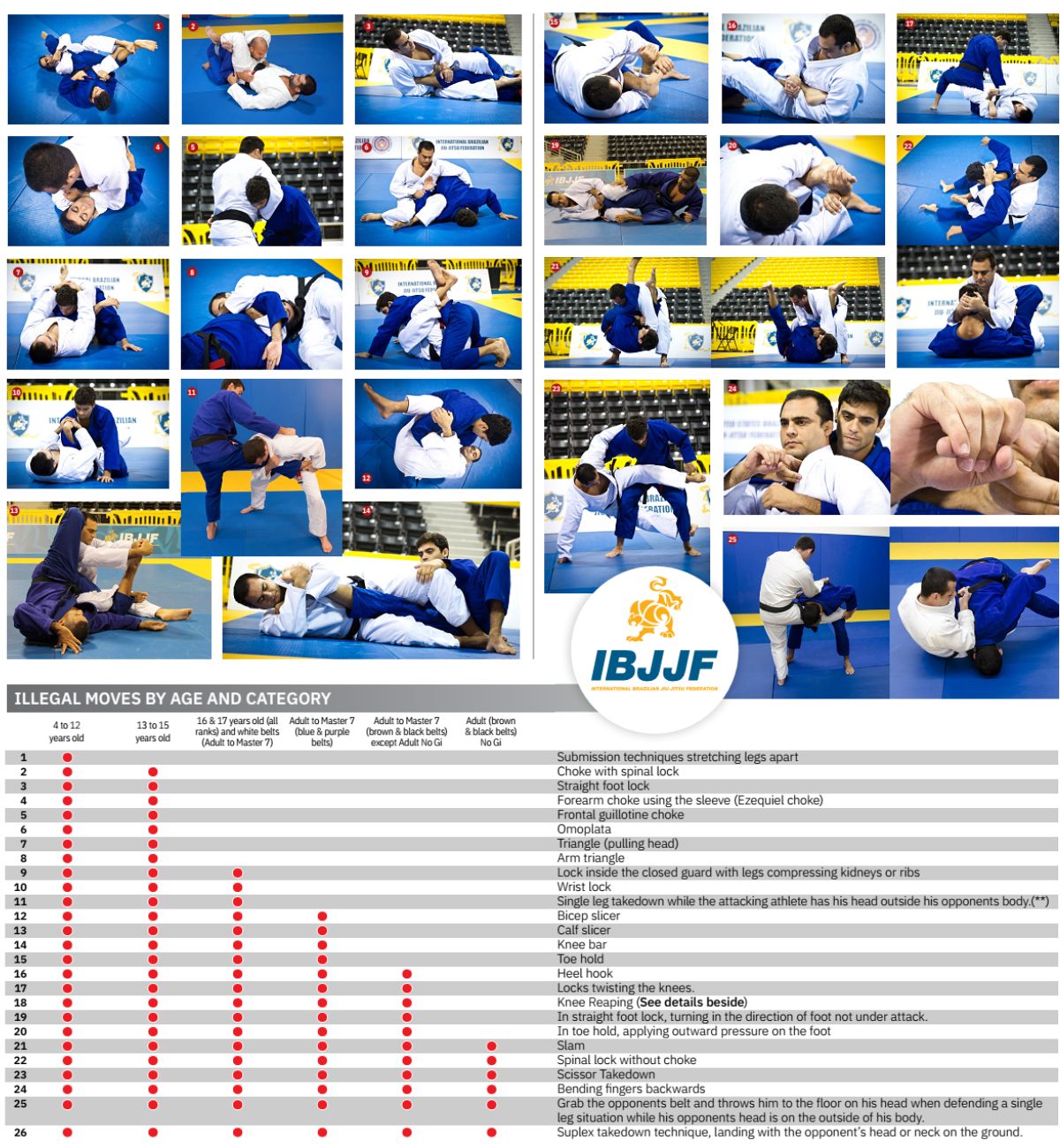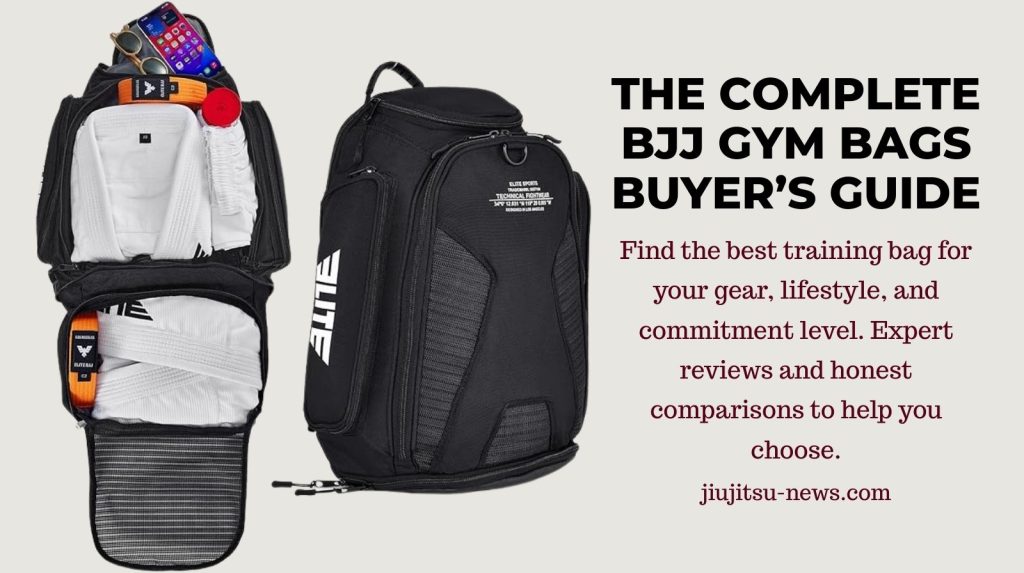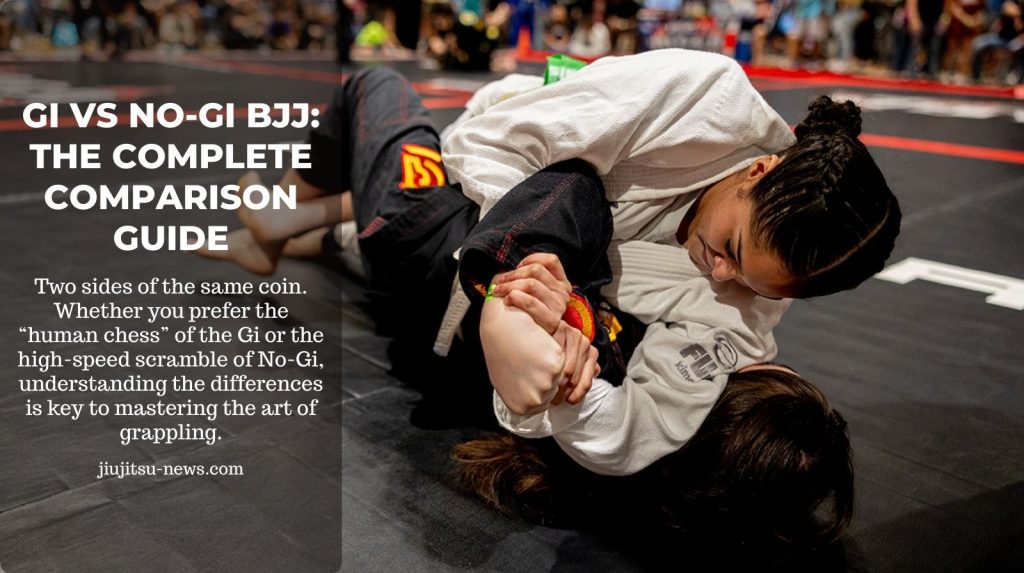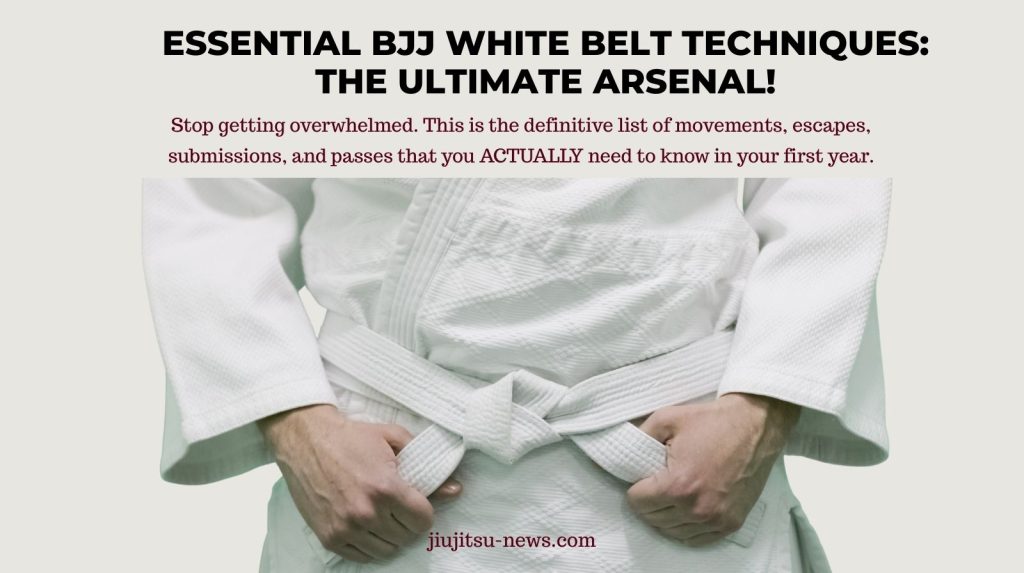IBJJF Rules Guide for Gi & No‑Gi Competitors
Learn the key IBJJF rules that matter on competition day: illegal techniques, scoring, mat behavior, uniforms, and weigh‑ins – so you can focus on winning instead of getting disqualified.
The International Brazilian Jiu‑Jitsu Federation (IBJJF) runs the world’s largest schedule of Gi and No‑Gi tournaments, including the Pan and World Championships. Knowing the rules is just as important as drilling your A‑game if you want a smooth competition experience.
This guide breaks down the most important IBJJF rules for everyday competitors: illegal moves, mat etiquette, points, Gi and No‑Gi uniform standards, and weigh‑in procedures.
Pro tip: IBJJF publishes rule updates and uniform clarifications regularly. Always double‑check the latest rulebook and uniform page before your event, especially for No‑Gi rank colors and leg‑lock rules.
Quick Navigation
IBJJF Illegal Moves
IBJJF bans or restricts certain techniques because they create a high risk of serious injury, especially to the neck, spine, and knees. Some moves are illegal at all belts, while others only become legal at brown and black belt or in advanced No‑Gi divisions.
 Safety First
Varies by Rank & Age
Safety First
Varies by Rank & Age
Common Illegal Moves at Most Levels
- Jumping closed guard: Banned due to the risk of injuring a standing opponent’s knees or spine during the impact.
- Slams and suplexes: Picking an opponent up and forcefully throwing them to the mat is prohibited and can result in immediate disqualification.
- Spinal locks without a choke: Techniques that bend or twist the spine directly (like can openers and neck cranks without a choke) are illegal at all belts.
- Scissor takedown (kani basami): Banned because it can severely damage knees and ankles during the entry.
- Finger grabbing: Grabbing and twisting individual fingers (less than four at once) is illegal due to the high risk of sprains and fractures.
- Strikes: Any punches, kicks, elbows, knees, or open‑hand strikes lead to disqualification; IBJJF is a pure grappling ruleset.
Leg Locks, Knee Reaping & Slicers
- Heel hooks: In Gi, heel hooks are illegal at all levels. In No‑Gi, they are now allowed only for adult brown and black belts under specific IBJJF rules; lower belts are still prohibited from using them.
- Knee reaping: Forcing the opponent’s knee inward with your leg crossing their hip is illegal in Gi and only legal in certain advanced No‑Gi divisions; done incorrectly, it can cause major knee damage.
- Biceps & calf slicers: These compression locks are typically illegal for white and blue belts but become legal at higher ranks; always confirm their status for your division.
Important: Because IBJJF continues to adjust rules for advanced No‑Gi leg locks, consult the latest official rulebook and any “new rules updates” posts for the most current list of legal and illegal leg entanglements.
IBJJF Mat Rules & Etiquette
Knowing how to behave on the mat is crucial. Many disqualifications come not from submissions, but from arguing with referees, stalling, or trying to game the edge of the mat.
Respect the Referee
- Athletes must follow the referee’s commands at all times; ignoring instructions can lead to penalties or disqualification.
- Arguing, shouting, or using disrespectful language toward referees is considered a serious foul; decisions are final on the mat.
- Coaches should use official protest channels rather than confronting referees during or immediately after matches.
Belt‑Tying & Leaving the Mat
- When the referee stops the match to retie belts, competitors generally have about 20 seconds to tie the belt properly; taking too long or repeatedly using this pause to rest can result in penalties.
- Intentionally walking or rolling out of bounds to avoid a submission or engagement is penalized and may award points or advantages to your opponent.
- If movement naturally carries both athletes out of bounds during a submission attempt, referees may restart the action in the center with the position or award advantages/points as appropriate.
IBJJF Points Rules
Winning by points is the most common outcome in IBJJF tournaments. Understanding how positions score – and when they do not – helps you build smart competition strategies.
Points are only awarded once you have established the position and held control for a few seconds; quick transitions or scrambles that are not stabilized do not score.
| Position / Technique | Points |
|---|---|
| Back mount / back control (hooks or body triangle) | 4 |
| Full mount | 4 |
| Guard pass (clear legs and stabilize) | 3 |
| Knee‑on‑belly | 2 |
| Sweep (reversal from guard or half guard) | 2 |
| Takedown (bringing opponent to mat with control) | 2 |
- You must control the position for roughly 3 seconds to receive points; otherwise, the referee may award only an advantage or nothing at all.
- Side control by itself does not earn points, but it often sets up scoring transitions to mount, knee‑on‑belly, or back control.
- Advantages are used as tie‑breakers when points are equal and are awarded for strong but incomplete attempts to score (near sweeps, near guard passes, or near submissions).
- Competitors can receive penalties for stalling, refusing to engage, using illegal grips (for example, four fingers inside sleeves), or repeatedly fleeing the mat.
Related: A dedicated breakdown of the IBJJF points system with examples of scoring scenarios can help you visualize exactly how referees award points and advantages.
IBJJF Gi Uniform Rules
IBJJF has strict Gi standards to keep matches fair and prevent dirty or ungrippable uniforms from giving unfair advantages. Gis are checked before your first match, and failing uniform inspection can force you to change gi or even lead to disqualification if you cannot comply in time.
Gi Material & Fit
- Gi jackets and pants must be made from cotton or cotton‑like fabric, not so thick or stiff that normal grips are impossible.
- Sleeves must reach no more than about 5 cm above the wrist when arms are extended straight, and pant cuffs no more than about 5 cm above the ankle.
- The collar must meet specified thickness and width limits; overly thick lapels that are hard to grip may cause your gi to be rejected.
Gi Colors & Patches
- Only three gi colors are allowed: white, royal blue, and black.
- Gi jacket and pants must be the same solid color; mixing a white jacket with blue pants, for example, is not allowed.
- The collar must match the color of the jacket; contrasting lapel colors are prohibited.
- Patches are only allowed in specific areas defined by IBJJF and must be securely stitched; loose or oversized patches that interfere with grips can lead to rejection.
Related: A detailed guide to gi sizing and patch placement can help you choose a competition‑legal gi that still looks sharp on the mat.
IBJJF No‑Gi Uniform Rules
No‑Gi uniforms are much more standardized than in the early days. Ranked rash guards and belt‑color‑matched shorts or spats are required at IBJJF events, and uniforms are checked before you compete.
Rash Guard Requirements
- All competitors must wear a tight‑fitting rash guard that covers the torso to the waistband; loose T‑shirts are not allowed.
- Approved colors are black, white, black‑and‑white, or designs showing the athlete’s belt rank color (blue, purple, brown, black), with rank color making up at least about 10% of the visible area.
- Logos and designs are permitted, but they must not obscure rank color so much that referees cannot identify it quickly.
Shorts & Compression (Men & Women)
- Shorts must be board‑short style, in black, white, black‑and‑white, or belt rank color, with no pockets or with pockets completely sewn shut, and no exposed zippers, buttons, or hard plastic.
- Short length should reach at least mid‑thigh and no lower than the knee, avoiding excessively short or baggy cuts.
- Women may wear compression shorts or spats under or instead of board shorts, in black, white, or belt rank color, following the same “no pockets or hardware” safety rules.
- Brief‑style undergarments are mandatory under all No‑Gi bottoms, and uniforms may be checked during weigh‑ins.
IBJJF Weigh‑In Rules
IBJJF weigh‑ins are strict: you only get one attempt, and you weigh in wearing your full competition uniform for that ruleset. Missing weight means automatic disqualification from that division.
- Same‑day weigh‑ins: Athletes weigh in on the day of competition, usually shortly before their first match; there is no day‑before weigh‑in for standard IBJJF events.
- Weighing in Gi: For Gi divisions, you weigh in wearing your gi and belt, and your total weight must be at or below the limit for your class.
- Weighing in No‑Gi: For No‑Gi divisions, you weigh in already dressed in your rash guard and shorts/spats; again, your total weight must be within the division limit.
- One attempt only: There is no official second try on the IBJJF scale; if you are over the limit, you are immediately disqualified from that division.
- Choose weight class wisely: When registering, select a realistic division based on your training weight and planned uniform; last‑minute cuts are risky under single‑attempt weigh‑in rules.
Tip: Check the IBJJF weight chart for your age, belt, and division, and weigh yourself at home in a similar gi or No‑Gi uniform at least a week before the event to avoid surprises.
Conclusion
IBJJF competitions offer huge benefits for progression: structured brackets, high‑level opponents, and a clear rule set that rewards positional jiu‑jitsu. Understanding those rules is part of being a prepared competitor.
By learning which moves are illegal, how points and advantages are scored, what uniforms are required, and how weigh‑ins work, you reduce the chance of avoidable disqualifications and can focus fully on executing your game on the mat.






